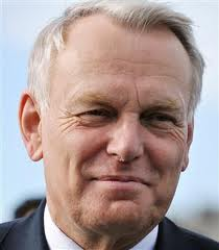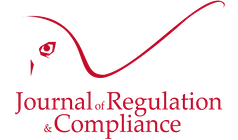On 21 August 2012, the French Prime Minister asked to relevant Ministers to reflect on the merger of the telecoms regulator and the media regulator.
http://www.thejournalofregulation.com/spip.php?article1582

It was a time where it was easy to distinguish the container(telecommunications) and the content (transported data, called "media"). Has responded to it, the institutional duality in France of two regulators, the « Autorité de régulation des communications électroniques et des Postes » - (ARCEP- the French telecommunications and postal regulator) and the « Conseil Supérieur de l’audiovisuel » (CSA -French audiovisual regulatory) for the regulation of the media. To the movement of technological convergence, we symmetrically consider to merge the two institutions, especially because the digital television makes it possible to give pictures from the phone and the the telephone operators have large media activities. This logic so mechanical, that articulates content and container, as in the United Kingdom, underestimates the dimension of public freedoms and culture, strength in the institution of the « Conseil Supérieur de l’audiovisuel » (CSA -French audiovisual regulatory) and further behind in the « Autorité de régulation des communications électroniques et des Postes » - (ARCEP- the French telecommunications and postal regulator) which presents itself as a economic regulator. This shows that the regulation is not only a technical matter.
© thejournalofregulation
In France, it is difficult to imagine two regulators more different than the « Conseil Supérieur de l’audiovisuel - CSA » (French audiovisual regulatory) and the « Autorité de régulation des communications électroniques et des Postes - ARCEP » (French telecommunications and postal regulator). However, it is reasonable to argue that the "media" are both those that transmit ("data") and allowing it to transmit (information technology and telecommunications). Even before the convergence becomes clear, digital television by providing a step further, the concept of "media" shows this porosity, this intimacy between the flowing and allowing the flow. Thus, the Office of Communications (Ofcom) in the UK is the regulator from the beginning, is in charge of everything both telecommunications and media content, even as technological convergence was not initiated.
If France has chosen to build two separate regulators and seems so hard to give up this idea, it’s because this idea is both political and cultural. Indeed, France considers that telecommunications is a matter of engineering and money. Principle of attachment must be competitive, although market failures lead to interventions. This is the « Autorité de régulation des communications électroniques et des Postes » - (ARCEP- the French telecommunications and postal regulator). On the other hand, there is freedom of expression, diversity of political opinion, art, beauty, culture, diversity, protection of minorities. The principle is fundamentally political. This is the « Conseil Supérieur de l’audiovisuel » (CSA -French audiovisual regulatory).
When we reads the presentations that were made of the two authorities during their implementation, it is these two speeches at the opposite of the other, which were required. Therefore, how bring together what is called two ideologies? The French Prime Minister Jean-Marc Ayrault, after years of thoughts on the opportunities of merger of these two authorities and a report made in 2011 by the president of the « Conseil Supérieur de l’audiovisuel » (CSA -French audiovisual regulatory) on digital television, asked that "we have to think about it". Are are working on the Minister of Culture the Minister of the digital economy, and for some reason, the Minister of "productive adjustment." There is in any case that the regulation is not just a matter of logic notes. Was also made with with national cultures and the weight of history. And that probably the French culture is not English culture ...

votre commentaire